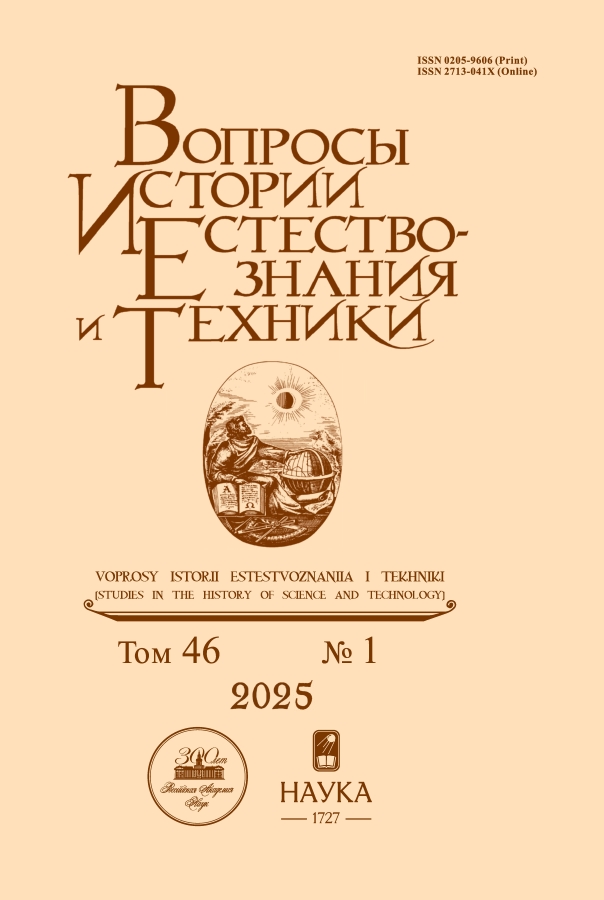On the Reconstruction of an Ancient Egyptian Sundial from Archaeological Excavations in the Valley of the Kings
- Авторлар: Vodolazhskaya L.N.1
-
Мекемелер:
- V. I. Vernadsky Crimean Federal University
- Шығарылым: Том 46, № 1 (2025)
- Беттер: 61-74
- Бөлім: From the History of Technology
- URL: https://rjdentistry.com/0205-9606/article/view/684641
- DOI: https://doi.org/10.31857/S0205960625010045
- EDN: https://elibrary.ru/CNTSLY
- ID: 684641
Дәйексөз келтіру
Аннотация
The article analyzes hour marking on the ancient Egyptian vertical sundial made of a carved limestone slab, discovered in the Valley of the Kings in 2013 by the University of Basel’s archaeological expedition. Calculations are given of the angles between hour lines and noon line for a vertical sundial with an inclined gnomon and it is concluded that the markings on the tiles correspond to the hour markings of the vertical sundial, with a half-hour shift after midday. A hypothesis is proposed and proved concerning simultaneous use of the vertical sundial with an inclined gnomon, similar to that discovered in the Valley of the Kings, and the ancient Egyptian L-shaped sundial.
Негізгі сөздер
Толық мәтін
Авторлар туралы
Larisa Vodolazhskaya
V. I. Vernadsky Crimean Federal University
Хат алмасуға жауапты Автор.
Email: vodolazhskayaln@cfuv.ru
Physico-Technical Institute
Ресей, Prospekt Vernadskogo, 4, Simferopol, Republic of Crimea, 295007Әдебиет тізімі
- Antoniadi, E.-M. (1934) L’astronomie égyptienne: depuis les temps les plus reculés jusqua’à la fin de l’époque Alexandrine. Paris: Gauthier Villars.
- Bickel, S., and Gautschy, R. (2014) Eine ramessidische Sonnenuhr im Tal der Könige, Zeitschrift für ägyptische Sprache und Altertumskunde, vol. 141, no. 1, pp. 3–14.
- Borchardt, L. (1911) Altägyptische Sonnenuhren, Zeitschrift für ägyptische Sprache und Altertumskunde, vol. 48, pp. 9–17.
- Clagett, M. (1999) Ancient Egyptian Science: A Source Book. Philadelphia: The American Philosophical Society Press, vol. 3: Ancient Egyptian Mathematics.
- Couprie, D. L. (2013) The Qumran Roundel and the Mrḫyt: A Comparative Approach, Dead Sea Discoveries, vol. 20, no. 2, pp. 264–306.
- Frankfort, H. (1933) The Cenotaph of Seti I at Abydos. London: William Clowes and Sons, Limited, vol. 2.
- Griffith, F. Ll., Flinders, P. W. M., and Brugsch, H. (1889) Two Hieroglyphic Papyri from Tanis. London: Trübner & Co.
- Ideler, L. (1831) Lehrbuch der Chronologie. Berlin: A. Rücker.
- Pipunyrov, V. N. (1982) Istoriia chasov s drevneishikh vremen do nashikh dnei [History of Clocks from Ancient Times to the Present Day]. Moskva: Nauka.
- Rohr, R. R. J. (1996) Sundials: History, Theory, and Practice. New York: Dover Publications.
- Savoie, D. (2009) Sundials Design Construction and Use. Chichester: Springer& Praxis Publishing.
- Symons, S. (1999) Ancient Egyptian Astronomy: Timekeeping and Cosmography in the New Kingdom. Submitted for the Degree of Doctor of Philosophy. Department of Mathematics and Computer Science, University of Leicester. Leicester, 1999.
- Vodolazhskaya, L. (2013) Analemmatic and Horizontal Sundials of the Bronze Age (Northern Black Sea Coast), Archaeoastronomy and Ancient Technologies, vol. 1, no. 1, pp. 68–88.
Қосымша файлдар





















